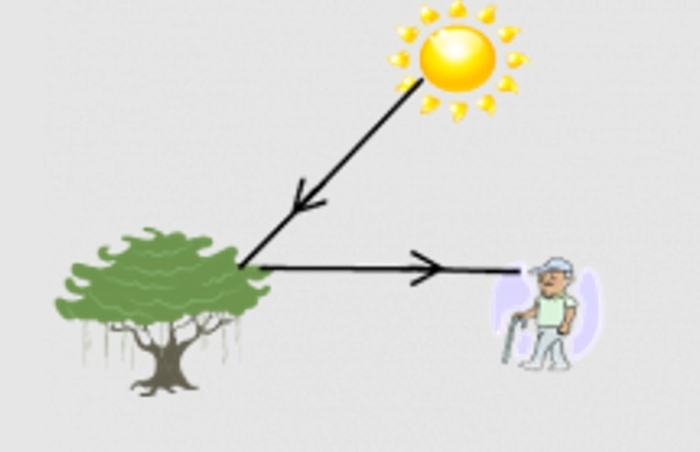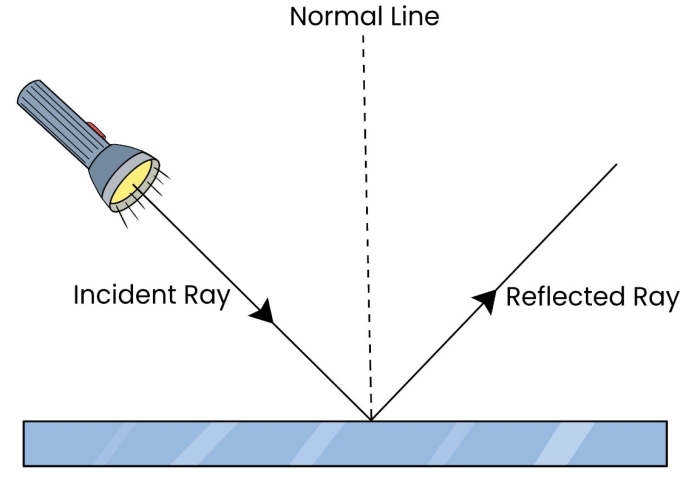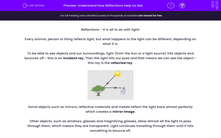Reflections - it is all to do with light!
Every animal, person or thing reflects light, but what happens to the light can be different, depending on what it is.
To be able to see objects and our surroundings, light (from the Sun or a light source) hits objects and bounces off - this is an incident ray. Then the light hits our eyes and that means we can see the object - this ray is the reflected ray.

Some objects such as mirrors, reflective materials and metals reflect the light back almost perfectly which creates a mirror image.
Other objects, such as windows, glasses and magnifying glasses, allow almost all the light to pass through them, which means they are transparent. Light continues travelling through them until it hits something to bounce off.
So how does this help us to see things?
Light always travels in straight lines as beams or rays and it comes from a light source.
Light is a special type of energy that does not need to travel through a medium. This means that it can travel through a completely airless space, called a vacuum.

This is the reason that we can see the Sun and stars. Unlike sound waves, that need air molecules to vibrate through in order to travel, light can travel through space.
So let's remember:

Incident ray - the ray of light that comes from a light source. This creates an angle of incidence.
Reflected ray - the ray or beam of light that bounces off an object. This creates an angle of reflection.
Law of reflection - this law states that the angle of incidence is equal to the angle of reflection. All light that is reflected obeys this law.
The 'normal' line is a line that is perpendicular(at a right angle) to the surface where light is entering from one medium to another.
In this activity, we will be revising this language and looking at how light travels.








